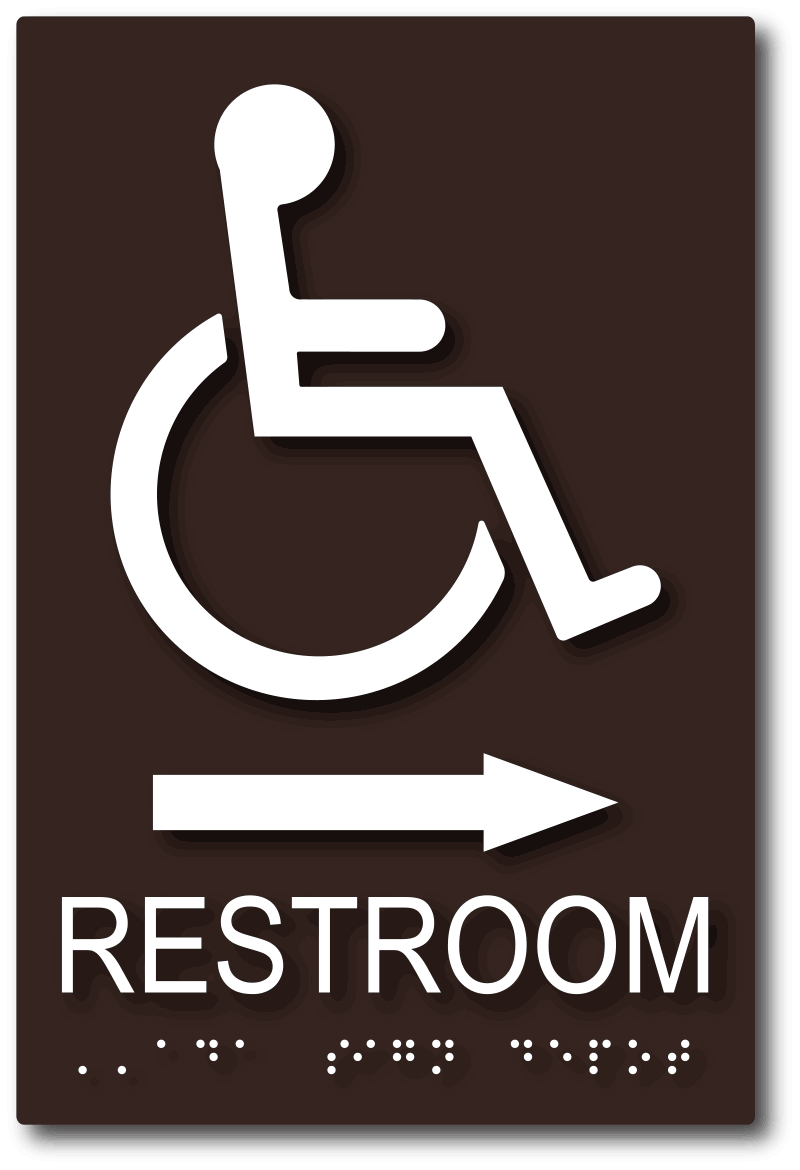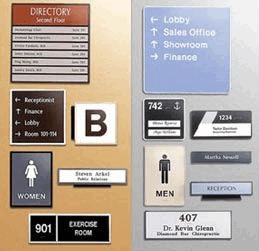The Function of ADA Signs in Abiding By Access Requirements
The Function of ADA Signs in Abiding By Access Requirements
Blog Article
ADA Signage: Ensuring Access and Conformity in Public Spaces
ADA signage plays a crucial duty in assuring accessibility and conformity within public areas, substantially adding to a comprehensive setting for people with specials needs. By sticking to ADA standards, signs not only promotes navigating but likewise underscores a company's dedication to diversity and equality. As we discover the nuances of ADA signage, from responsive features to create intricacies, it's vital to consider just how these elements integrate to copyright the civil liberties of all users. What are the typical pitfalls organizations encounter in maintaining compliance, and exactly how can future trends in signs remain to drive ease of access onward?
Importance of ADA Signs
In modern-day culture, the relevance of ADA signs prolongs beyond mere conformity with lawful mandates to embody a commitment to inclusivity and accessibility for all people. These indicators are crucial in developing atmospheres where individuals with impairments can navigate public rooms with the very same simplicity and self-reliance as those without impairments. By offering standardized and clear info, ADA signage guarantees that everyone can access facilities, services, and information without barriers.
The importance of ADA signs depends on its ability to boost the quality of life for people with disabilities by advertising equal gain access to. It eliminates the barriers that may or else prevent their capability to participate totally in neighborhood life. Additionally, these indicators function as visible indications of an organization's dedication to variety and equality, mirroring wider social values that champion the legal rights and dignity of all people.
Moreover, ADA signage plays an important duty in public security. By leading individuals to leaves, restrooms, and various other essential facilities, it guarantees that all individuals, regardless of physical capability, can leave safely throughout emergency situations. In summary, ADA signs is not just a regulatory requirement however an effective device for fostering a inclusive and equitable society.
Crucial Element of Compliance

Placement is important; indications need to be set up in places that are quickly visible and reachable. Usually, signs must be placed between 48 and 60 inches from the ground to guarantee availability for both standing and mobility device customers. Responsive aspects, such as Braille, are vital for individuals with visual impairments, providing critical details in a non-visual style.
High-contrast colors between the text and history are needed to improve readability for individuals with reduced vision. The ADA mandates certain contrast proportions to make sure clearness. Additionally, personality size is a vital factor to consider, with minimum elevation demands dictated by the watching range to make certain readability from numerous angles.
Style Factors To Consider for Accessibility
Creating available signage needs a careful method to guarantee it fulfills the demands of all users, specifically those with specials needs. This involves taking into consideration different layout aspects that boost readability and functionality. Trick aspects consist of the option of typeface, color comparison, and tactile functions. Typefaces ought to be sans-serif, with basic and clear letterforms, to facilitate simple analysis. The size of the message is just as vital, with ADA standards recommending a minimal elevation based view on viewing distance to make certain legibility.
Contrasting shades between text and background are necessary for presence, particularly for individuals with visual disabilities. A high comparison proportion aids identify the message from its background, improving readability under different lights problems. Additionally, tactile elements, such as Braille and raised characters, are important for people that are blind or have reduced vision. These aspects need to be situated at a regular height and position to ensure easy gain access to and understanding.
Furthermore, the positioning of signage plays a substantial duty in accessibility. Indicators must be set up in locations that are easily obtainable and unblocked. Making sure that signage is mounted at ideal heights and angles enables all customers, consisting of those using mobility devices, to engage with them efficiently.
Common Blunders to Prevent

Another prevalent mistake is the incorrect positioning of signage. ADA guidelines specify precise elevation and place requirements to make certain that indicators are reachable and quickly visible visit this page by all individuals, including those utilizing wheelchairs. Neglecting these standards not just hinders access however additionally runs the risk of non-compliance with lawful standards.
Furthermore, insufficient contrast between message and background is a regular oversight. Ample contrast is necessary for readability, particularly for individuals with reduced vision. Developers in some cases select shades that are aesthetically appealing however do not have the essential contrast, making the message hard to discern.
Finally, some developers fall short to integrate tactile aspects, such as Braille, which are critical for people who are blind. Omitting these features not only leads to non-compliance with ADA policies but also restricts accessibility for a segment of the populace that relies on responsive information.
Future Trends in Signage
Improvements in modern technology and raising recognition of inclusivity are forming the future trends in signs layout. As culture comes to be more conscious of varied demands, the assimilation of clever modern technologies right into signs is obtaining traction. Digital signs, as an example, is advancing to consist of interactive attributes and real-time updates, which can be critical in giving vibrant info in public areas. These indications typically incorporate touch screens or gesture-based controls, making it possible for customers to browse content tailored to their details needs.
An additional arising pattern is the utilization of increased reality (AR) to boost individual experience. AR-enabled signage can overlay electronic information onto the physical setting, offering aesthetically impaired people with auditory or haptic comments. ADA Signs. This technology not just enhances accessibility however also produces an interesting experience for all individuals
Sustainability is also a substantial aspect influencing signs trends. Environmentally friendly materials and energy-efficient lights services are being prioritized to line up with international ecological goals. Improvements in products science are leading to the advancement of even more weather-resistant and sturdy signs.
Final Thought
ADA signs plays a vital role in ensuring accessibility and conformity within public rooms by including tactile elements, high-contrast colors, and tactical positioning. The adherence to ADA requirements not only promotes secure navigation for people with specials needs but also represents an organization's dedication to diversity and inclusivity. By avoiding common mistakes and embracing future trends, public rooms can remain to progress these worths, making sure that the legal rights and self-respect of all individuals are respected and upheld.
ADA signage plays an essential role in guaranteeing accessibility and conformity within public rooms, substantially contributing to an inclusive environment for people with specials needs. As we check out the nuances of ADA signage, from responsive functions to develop complexities, it's essential to consider just how these aspects coalesce to support the rights of all customers.In contemporary society, the significance of ADA signs prolongs beyond plain conformity with legal requireds to symbolize a commitment to inclusivity and access for all people. By supplying standard and clear info, ADA signage ensures that every person can access centers, solutions, and information without obstacles.
ADA signage plays a vital duty in guaranteeing access and conformity within public spaces by including responsive elements, high-contrast shades, and calculated placement. (ADA Signs)
Report this page